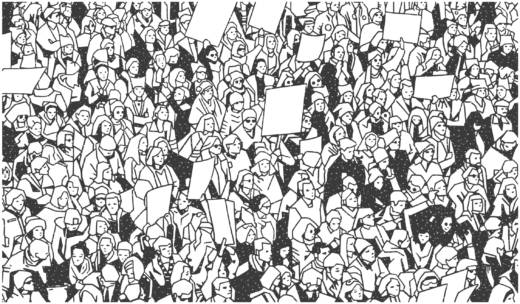If we and our students are to solve inequality, we have to reimagine what labor activism looks like, and the teacher strikes provide the perfect platform to spark those conversations. These are discussions teachers are perfectly poised to lead and that students can relate to, given the near-weekly headlines about teachers taking to the picket lines. They’re also discussions that balance the bleak realities of inequality with a people-powered path to a better future. But take note that my emphasis on discussion here is intentional. Teachers need to be careful not to engage in any explicit political advocacy in the classroom. By keeping the focus on learning about labor history and how the movement has evolved over time and connects the present moment, students can come to their own conclusions about any modern-day political battles.
So if you’re inspired like me, I’ve collected some resources below for contextualizing the teacher strikes in terms of the broader history of labor, unions and organizing.
Keeping Up With Current Events
To get students started, have them dig into recent news coverage of the teacher strikes. You can, of course, direct students to relevant articles from newspapers and blogs, but there are also a host of resources specifically tuned to classroom needs. Newsela is a particularly good, up-to-date resource with articles on the strikes that can be adjusted to students’ reading levels.
Unpacking Labor History
It can be tough to find quality resources on social studies and specifically labor. Many apps and sites gloss over the significant impact of labor and unions, as well as the deep intersection between labor and other struggles. There are, however, some extraordinary, research-backed websites out there. Some of my personal favorites include the American Social History Project, especially their Who Built America? program. The Zinn Education Project has a whole set of resources specifically on labor history, but the entire website is worth digging into. Beyond the Bubble is a project by the Stanford History Education Group that offers primary source learning materials paired with excellent, skills-building assessments, many of which cover labor-related topics. Finally, if you’re teaching labor history, you’re gonna address the New Deal, and for that you’ve gotta check out the Living New Deal.
Finally, while its focus is far broader than just labor issues, Rethinking Schools is an indispensable resource. I’d specifically recommend this exceptional lesson plan and list of related materials.
Gaining Perspective Through Books and Films
Teachers have long used Upton Sinclair’s The Jungle to give students a window into the horrific conditions that spurred the labor movement in the early 20th century. For a more modern classic, check out Barbara Ehrenreich’s Nickel and Dimed, which chronicles the plight of service-industry workers, a sector of the economy that has largely replaced the factory jobs once associated with unions. For younger kids, you might look to the list of additional resources for elementary kids in this lesson plan.
In terms of film, Inequality for All gives students a nice overview of the causes of growing economic inequality. To help students process the role unions played in communities, turn to Harlan County USA, one of the best documentaries of all time, which focuses on a harrowing miner strike in Kentucky. Roger & Me can be a good platform for discussing the end of labor’s dominance and its impact on the Midwest.
Connecting the Labor Movement to Social Justice
To fully grasp the importance and history of labor and collective organizing, students must understand how fighting for better wages, benefits, and working conditions has been most effective when aligned with civil rights movements. Let’s not forget, for instance, that Dr. King’s “I Have a Dream Speech” took place during the March on Washington for Jobs and Freedom, or that a key element of the Black Panthers' platform was full employment, or that the first farmworkers’ union was thanks to Latino/a activists like César Chávez and Dolores Huerta, or that women working in textile mills pioneered earliest organizing efforts in the U.S., and so on.
To help illuminate how labor issues are social justice issues, teachers can turn to many of the same resources listed above, but I also wanted to call attention to one site that does a great job of intersectional work: Civil Rights Teaching. The site focuses on reframing traditional historical narratives or centering marginalized histories, and the section on Labor, Land, and Economics is no exception.


